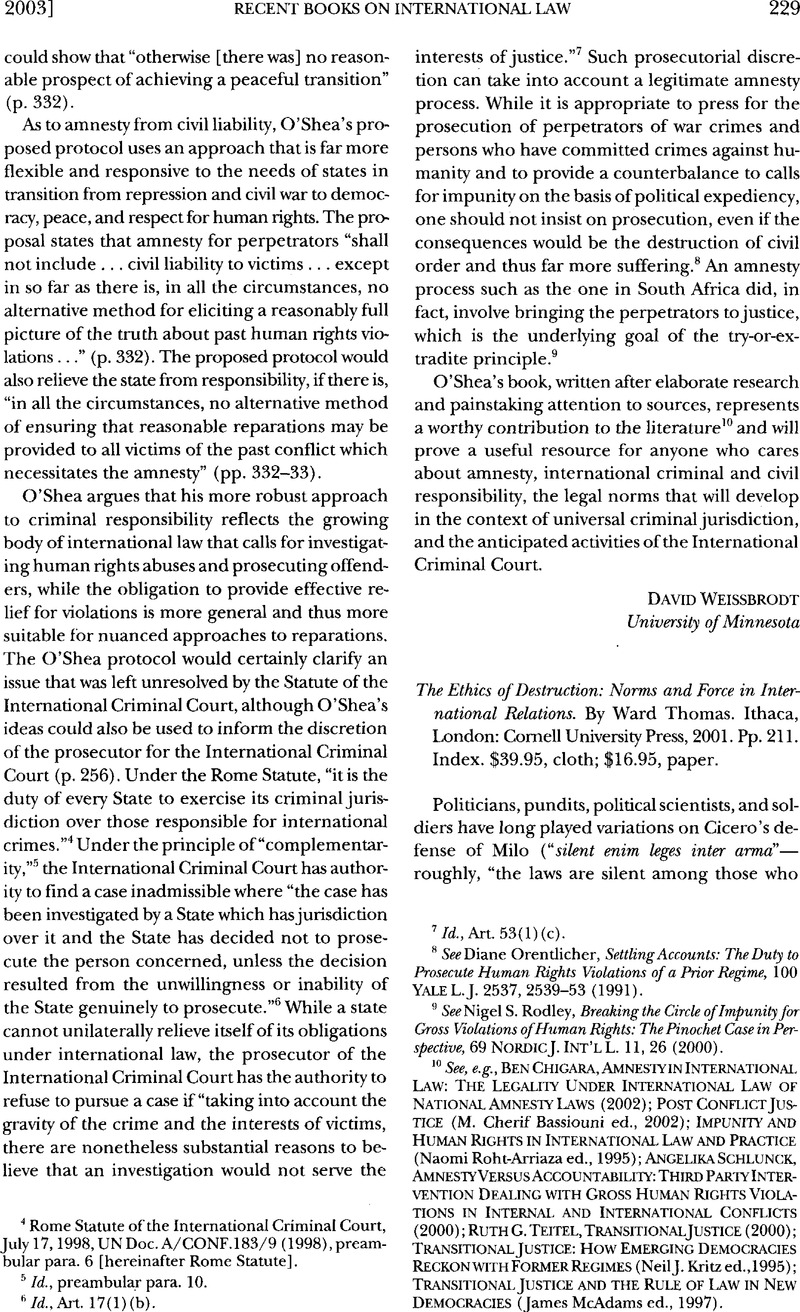No CrossRef data available.
Published online by Cambridge University Press: 27 February 2017

1 Regulations Respecting the Laws and Customs of War on Land, annex to Convention [No. IV] Respecting the Laws and Customs of War on Land, Oct 18,1907, 36 Stat. 2277, l Bevans631.
2 Hague Rules of Air Warfare, drafted December 1922- February 1923, reprinted in Documents on the Laws of War 141 (Adam Roberts and Richard Guelff eds., 3d ed. 2000).
3 Hays Parks thoroughly reviews the law of armed conflict related to aerial bombing in W. Parks, Hays, Air War and the Law of War, 32 A.F. L. Rev. 1 (1990)Google Scholar. A nice summary of the origins of the law may be found in Gail Gardam, Judith, Proportionality and Force in International Law, 87 AJIL 391, 394–403 (1993)Google Scholar.
4 Protocol Additional to the Geneva Conventions of 12 August 1949, and Relating to the Protection of Victims of International Armed Conflicts, opened for signature, Dec. 12, 1977, 1125 UNTS 3 [hereinafter Additional Protocol I].
5 Legality of the Threat or Use of Nuclear Weapons, 1996 ICJ Rep. 226 (July 8); Legality of the Use by a State of Nuclear Weapons in Armed Conflict, 1996 ICJ Rep. 66 (July 8).
6 For example, the definition of military objective in the 1976 revision to the Army Field Manual (No. 27-10)— “combatants, and those objects which by their nature, location, purpose, or use make an effective contribution to military action and whose total or partial destruction, capture or neutralization, in the circumstances ruling at the time, offers a definite military advantage”—is identical to Article 52(2) of Additional Protocol I (with the exception of combatants, who are implicitly covered as military objectives under Article 43 (2)).